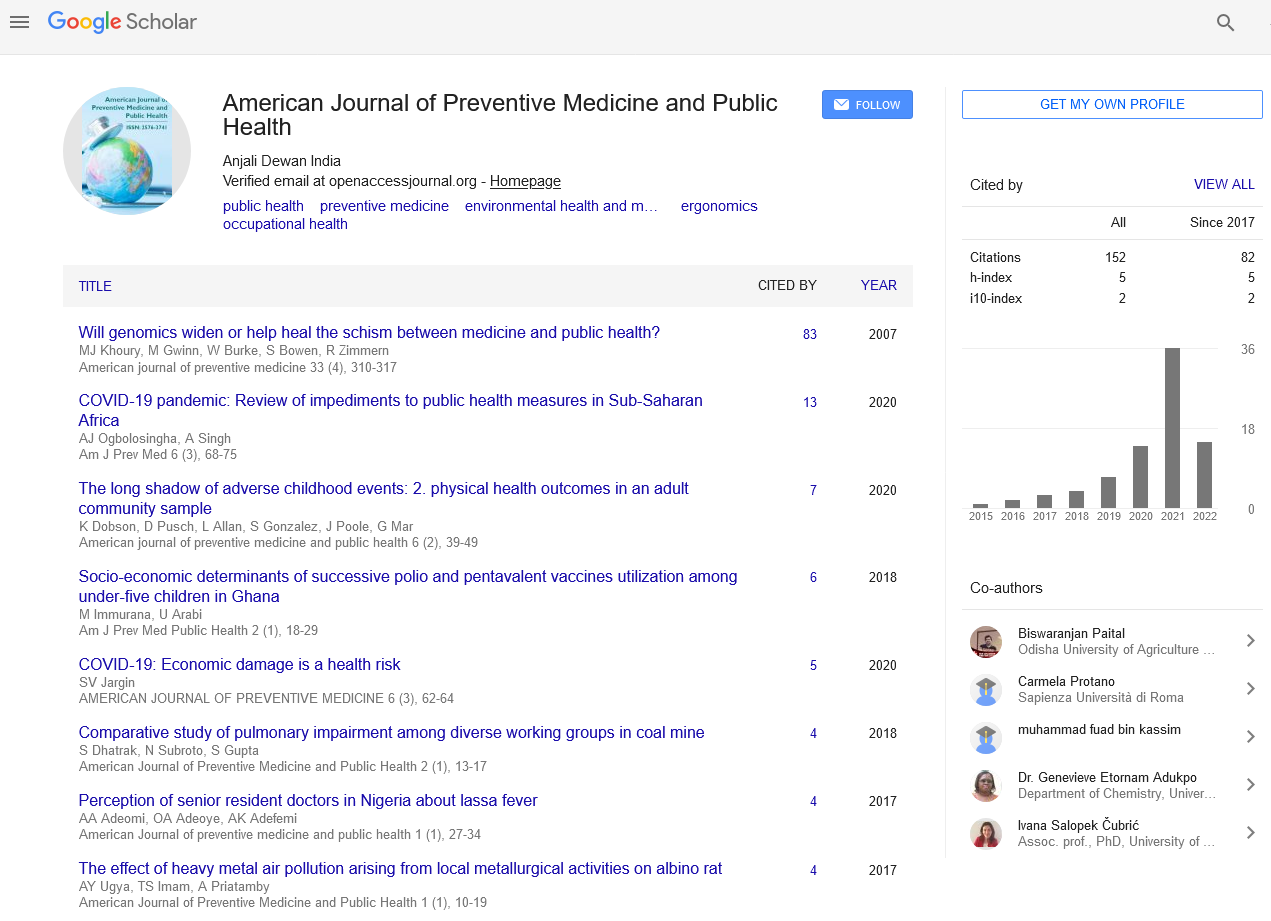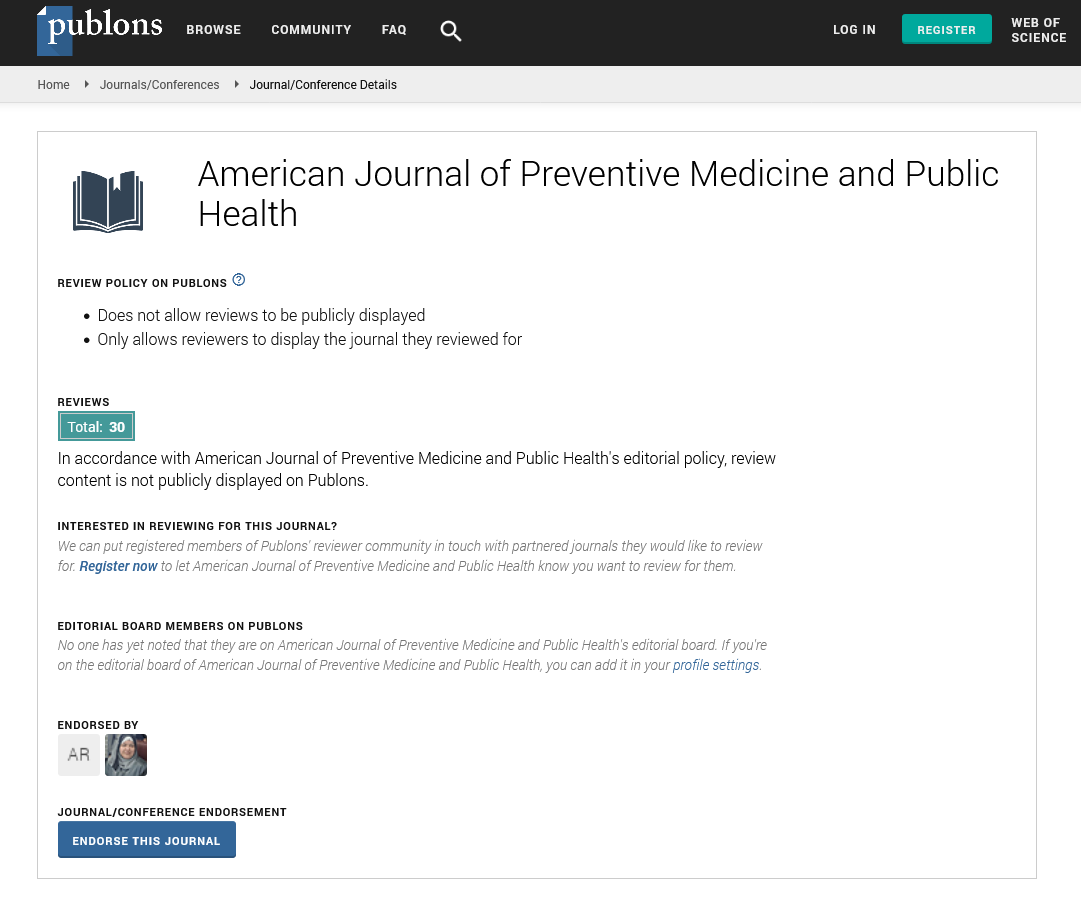Perspective - American Journal of Preventive Medicine and Public Health (2022)
Congenital Cytomegalovirus Infection Testing and Diagnosis
Michael Nevels*Michael Nevels, Department of Microbiology, Taiz University, Taiz, Yemen, Email: nevelsmichael01@gmail.com
Received: 04-Apr-2022, Manuscript No. AJPMPH-22-64133; Editor assigned: 06-Apr-2022, Pre QC No. AJPMPH-22-64133 (PQ); Reviewed: 21-Apr-2022, QC No. AJPMPH-22-64133; Revised: 26-Apr-2022, Manuscript No. AJPMPH-22-64133 (R); Published: 04-May-2022
Description
Congenital Cytomegalovirus (CMV) infection is a situation in which the virus is transmitted during pregnancy. CMV is the most prevalent intrauterine infection and belongs to the herpesviridae virus family. One of the vertically transmitted infections that cause congenital defects is human cytomegalovirus. There are two possible negative outcomes for infants who are infected by their mothers before birth:
• Low birth weight, microcephaly, seizures, petechial rash comparable to the “blueberry muffin” rash of congenital rubella syndrome, and moderate hepatosplenomegaly are all possible sequelae of generalized infection in the newborn (with jaundice). Though severe instances might be fatal, most newborns with CMV illness will survive with supportive treatment. However, between 80 and 90 percent of children will experience problems in their first few years of life, such as hearing loss, vision impairment, and varied degrees of learning handicap.
• Another 5% to 10% of infants who are sick but have no symptoms at birth will develop hearing, mental, or coordination issues later in life. Non-genetic sensor neural hearing loss in children is most commonly caused by CMV. Hearing loss can begin at any time during childhood, although it is most frequent in the first decade. It is a chronic condition that can affect both ears. The more severe the virus’s effects on the fetus are the earlier the woman contracts it during pregnancy; similarly, the incidence of SNHL is depending on whatever trimester of pregnancy CMV is contracted. In youngsters, the virus is responsible for 20% of sensor neural hearing loss.
These hazards appear to be almost solely linked to women who have never been infected with CMV before and are contracting the virus for the first time during pregnancy. CMV-related problems appear to be rare among women who had been infected for at least 6 months prior to conception. The rate of neonatal CMV infection in this group, which accounts for 50 percent to 80 percent of women of childbearing age, is 1 percent, and these infants appear to have no severe sickness or defects.
CMV testing and diagnosis
Antibodies to CMV develop in people who are infected with it, initially IgM and then IgG, showing current infection and immunity, respectively. Viral isolation or blood, urine, or saliva samples can be used to diagnose the infection. Most women with CMV have no symptoms, however some may experience symptoms similar to mononucleosis. During pregnancy, women who get a mononucleosis-like sickness should see their doctor.
Because there is no test that can absolutely rule out primary CMV infection during pregnancy, the Centers for Disease Control and Prevention (CDC) does not suggest routine maternal CMV infection screening throughout pregnancy. CMV prevention strategies should be followed by women who are concerned about CMV infection during pregnancy. Because the CMV virus can be found in saliva, urine, tears, blood, mucus, and other bodily fluids, frequent hand washing with soap and water is recommended following contact with diapers or oral secretions, especially if the child is in daycare or often interacts with other young children.
If the virus is identified in an infant’s urine, saliva, blood, or other body tissues during the first week after birth, it can be diagnosed as congenital CMV infection. Antibody tests cannot be used to diagnose congenital CMV; the virus must be discovered within the first week of life to be diagnosed. If the infant is tested more than one week after birth, congenital CMV cannot be diagnosed. CMV infection treatment should begin at 1 month of age and last for 6 months. Intravenous ganciclovir and oral valganciclovir are two therapeutic options. Following a diagnosis, blood testing, imaging, ophthalmology tests, and hearing tests should be used to look for any signs or symptoms of end-organ disease.
Copyright: © 2022 The Authors. This is an open access article under the terms of the Creative Commons Attribution NonCommercial ShareAlike 4.0 (https://creativecommons.org/licenses/by-nc-sa/4.0/). This is an open access article distributed under the terms of the Creative Commons Attribution License, which permits unrestricted use, distribution, and reproduction in any medium, provided the original work is properly cited.







